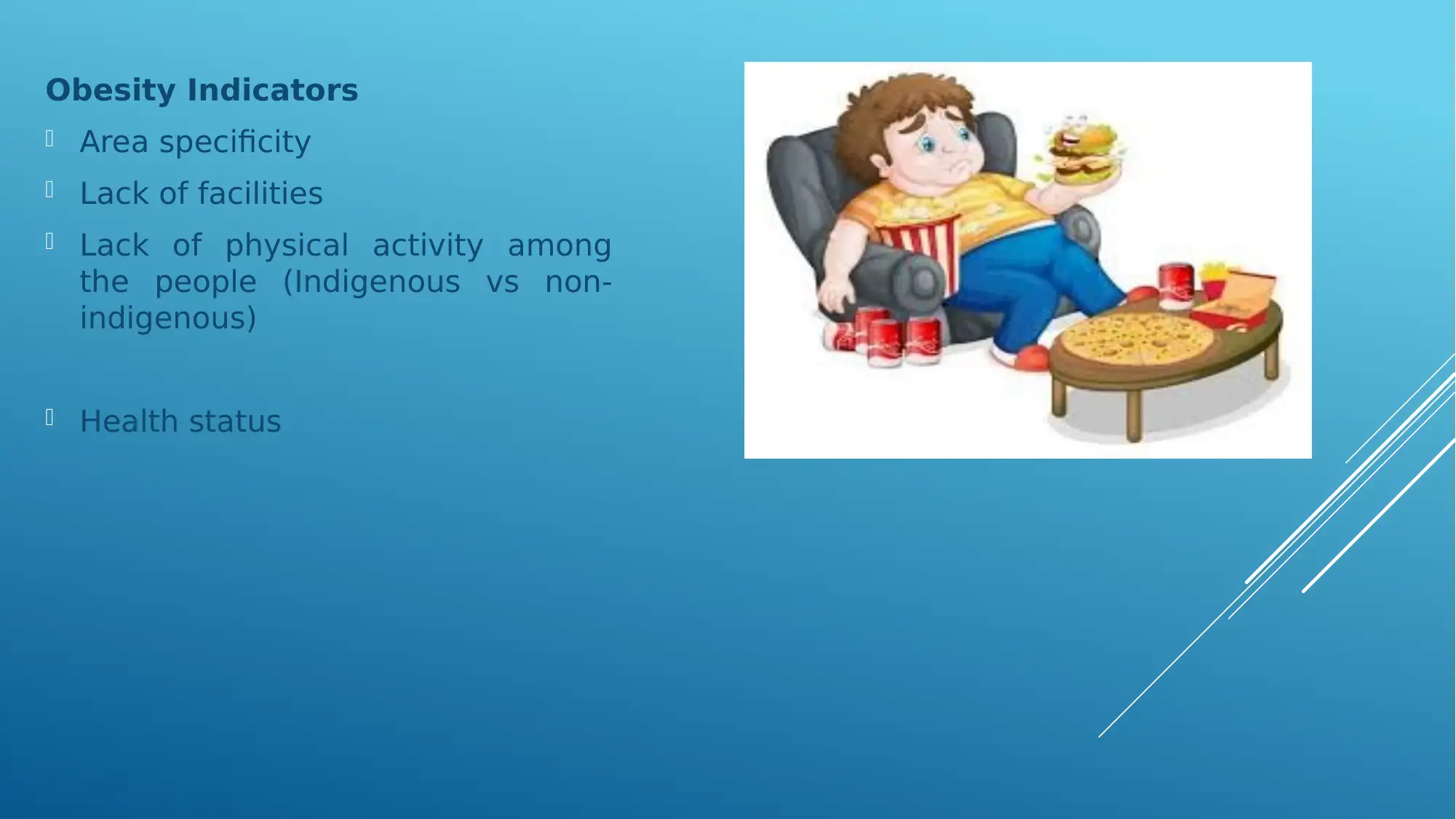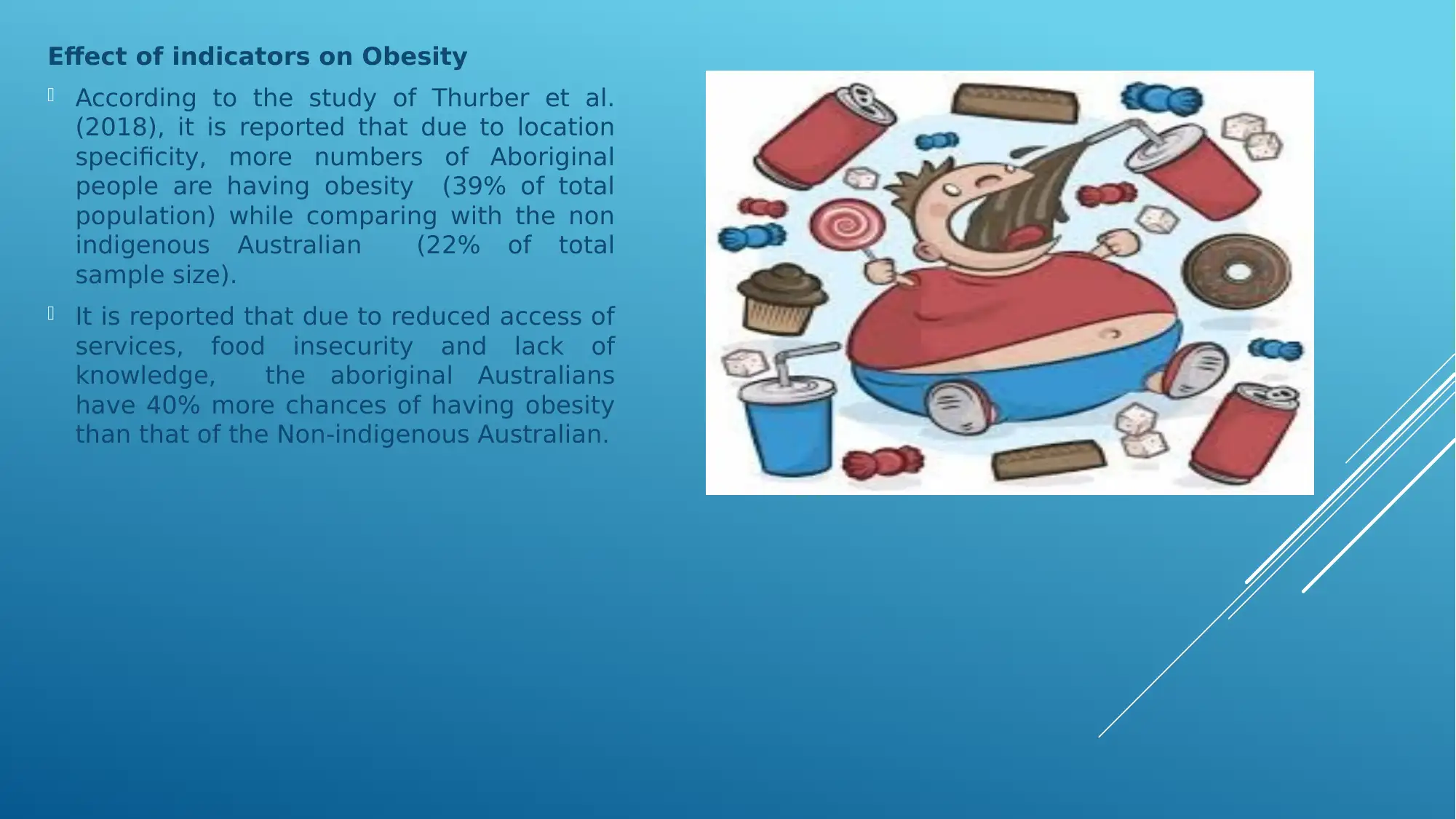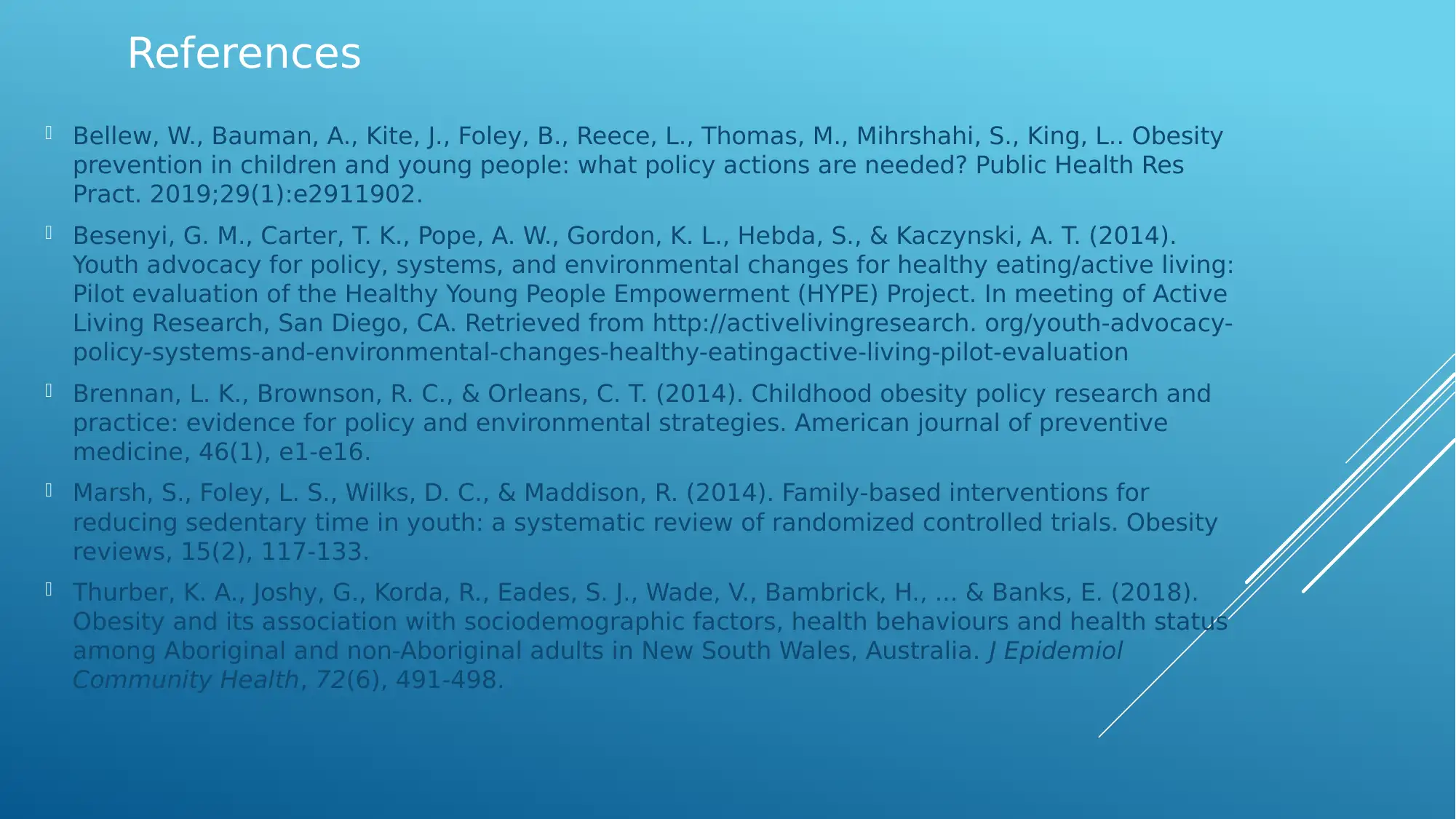Obesity Advocacy Report: Prevention Strategies and Outcomes
VerifiedAdded on 2022/09/18
|8
|569
|26
Report
AI Summary
This report focuses on obesity advocacy, particularly concerning youth health. It highlights the prevalence of obesity among Indigenous and non-Indigenous populations, emphasizing the impact of location-specific factors, reduced access to services, and lifestyle choices. The report underscores the importance of advocacy for physical activity and nutrition, citing studies that demonstrate the effectiveness of these strategies. It discusses how engaging youth and their families in advocacy efforts can lead to significant reductions in obesity rates. The report also references studies that support the integration of family-based interventions and the enhancement of knowledge among family members to promote healthy behaviors and outcomes. The report concludes by emphasizing the importance of continued advocacy to improve public health.
1 out of 8















![[object Object]](/_next/static/media/star-bottom.7253800d.svg)